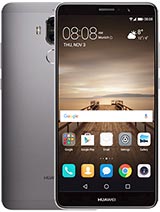Huawei Mate 9 vs. Xiaomi Mi 5s Plus: Bargain bin
Bargain bin

Still camera
Huawei and Leica introduced the second generation of their joint camera product and the Mate 9 is the lucky recipient. It features a 20MP monochrome camera (B&W) and a 12MP color one, each behind a 27mm-equiv. Lens with an f/2.2 aperture. Optical Image Stabilization is available, a rare feature on dual-camera phones.
The information from both cameras can be merged to produce better images with lower noise (great in the dark). To make things even better, each camera can capture multiple frames and merge them, similar to the HDR+ feature of the Google Pixel phones.
We're not in love with the camera interface, with many seemingly vital functions buried deep in settings menus.


Huawei Mate 9 camera interface
The Xiaomi Mi 5s Plus also has two cameras - one color, one monochrome, both with 13MP resolution. The cameras have the same relatively dark f/2.2 aperture, but smaller pixels compared to the Huawei/Leica cam. Still, like it, the two cameras merge their photos to produce a single, superior image.
MIUI 8's camera interface is nice and simple and we found the layout to be better than Huawei's.


Xiaomi Mi 5s Plus camera interface
The big deal about Leica is that the camera maker has a well-established identity and a certain "look" of the photos its cameras take. This is true for the Huawei Mate 9 as well - colors are true to life (with punchier colors available through extra modes), images are rich in detail and the dynamic range is quite good.
Thanks to the 20MP camera, Huawei also offers better than usual digital zoom. It's a bit slow as it requires multiple exposures, but the results are quite good. Also, there's an iPhone-like "wide aperture mode" that can create smooth bokeh effects at a simulated aperture of f/0.95 (you can adjust this all the way up to f/16).



Huawei Mate 9: 12MP color • 20MP color • 20MP monochrome



Huawei Mate 9: 12MP color • 20MP color • 20MP monochrome



Huawei Mate 9: 12MP color • 20MP color • 20MP monochrome
The Xiaomi Mi 5s Plus also turns in images with excellent contrast and detail, though we found it's not as good as the Leica cam in places (e.g. foliage has an artificial look to it). The dynamic range is great, we rarely had to use HDR.


Xiaomi Mi 5s Plus: 13MP color • 13MP monochrome


Xiaomi Mi 5s Plus: 13MP color • 13MP monochrome


Xiaomi Mi 5s Plus: 13MP color • 13MP monochrome
In low light, the Huawei Mate 9 performs brilliantly. Note that even though there's a 20MP color option in daylight, in the dark this mode produces 12MP shots despite its name. Also, zooming is disabled.


Low-light samples: Huawei Mate 9 • Xiaomi Mi 5s Plus
The Xiaomi Mi 5s Plus is another splendid performer in the dark, leveraging on its second camera as well. We suggest using both cameras (Stereo mode) in the dark, but disabling it in daytime as it can actually tarnish the image quality a bit.



Huawei Mate 9 vs. Xiaomi Mi 5s Plus
The Huawei Mate 9 is well-geared for selfies. It has an 8MP camera with autofocus (very few selfie cameras have that) and has a relatively bright f/1.9 aperture. The Xiaomi Mi 5s Plus relies on big pixels (2µm, behind f/2.0 aperture), which limits the resolution to 4MP.
The reason we specifically point out the AF on Mate 9's selfie camera is that some fixed-focus cams can be tricky to work with - you have to hold the phone at the right distance to your face. That said, the Mate 9 sometimes focuses on the background. So make sure the focus is right, the camera will capture rich detail and good colors.
The fixed focus on the Xiaomi Mi 5s Plus selfie cam did not cause issues and the low noise from the sensor makes for sharp images.
Half the price, just as good: For casual users, yes. The Huawei Mate 9 does offer some extra niceties (digital zoom, great bokeh effect, a more capable manual mode), but its advantage in raw image quality is fairly small, nowhere close to two-fold.
Video camera
For video recording, both phones offer 2160p @ 30fps as their top mode. Only the Huawei Mate 9 has a 60fps mode (at 1080p) and it records better audio at double the bitrate of the (192Kbps vs. 96Kbps). Wind noise cancellation also works better.
The Mate 9 has the upper hand in general. Its 2160p videos show much better quality, though in some scenes we noticed compression artifacts (our Video comparison charts specifically). Note that 2160p videos are recorded with the h.265 codec which YouTube does not like. 1080p videos are shot in a YouTube-friendly format, but their quality is nothing spectacular. The good news is that you can switch to 60fps without losing detail. Note that digital video stabilization works only in 1080p mode.
The Xiaomi Mi 5s Plus camera resolves enough detail without winning any competitions. The dynamic range is lower than Huawei's, foliage is lost to noise reduction while noise still remains. The 1080p videos actually turned out quite okay. They are sharper at least, but the low dynamic range and dodgy noise reduction do not improve.



Huawei Mate 9 vs. Xiaomi Mi 5s Plus (2160p)



Huawei Mate 9 vs. Xiaomi Mi 5s Plus (1080p)
Half the price, just as good: Not at all. The Huawei Mate 9 offers better features, video and audio quality, what more is there to say?
Conclusion
Had the Xiaomi Mi 5s Plus won all the challenges, this would have been a simple question. You get a great screen, amazing battery life and flagship-grade performance, but in other areas you get what you paid for.


Huawei Mate 9 • Xiaomi Mi 5s Plus
Our biggest takeaways from this is that people who shoot videos with the camera and listen to music (with or without headphones) should strongly consider doubling their budget for a new smartphone - the Huawei Mate 9 scored definitive victories in these categories.
Smaller advantages like superior sunlight legibility of the Mate 9's screen and newer software that's better-suited to western tastes further justify Huawei's asking price.

And you get the better-looking phone, so even just holding it you'll know you got your money's worth. For people on a budget, the Xiaomi Mi 5s Plus is a solid compromise - equal in some areas, still good in the rest.
Reader comments
- Alphanull
- 12 Jan 2017
- nC8
Huawei is excellent. But it don't means Xiaomi is awful. Mate 9 may have better speed in multitasking but mi 5s+ have sd821 with adreno 530 . Mail G71 MP8 in the face of Adreno 530 Can't do anything....... Camera .. designe .. display : ...
- Anonymous
- 25 Dec 2016
- 42a
Was going to say the same thing. They forgot to examine connectivity as well, which the mate kills the 5 on
- Toto
- 25 Dec 2016
- PFt
Are you sure about battery performance? xiaomi is good on that. lol



